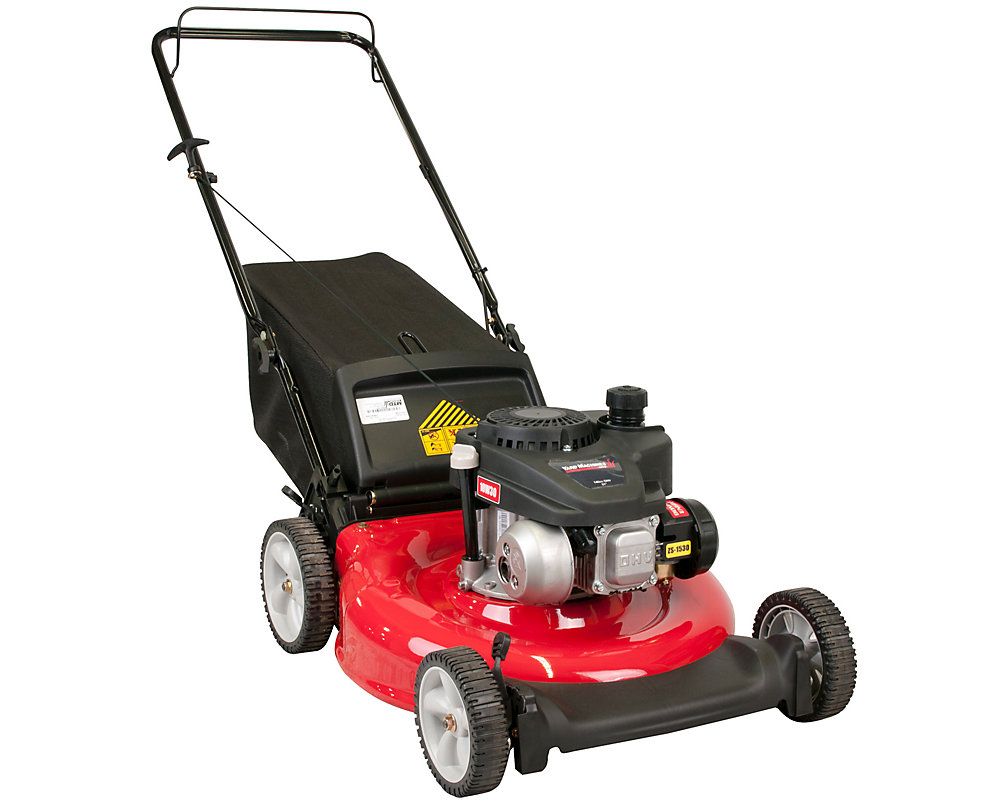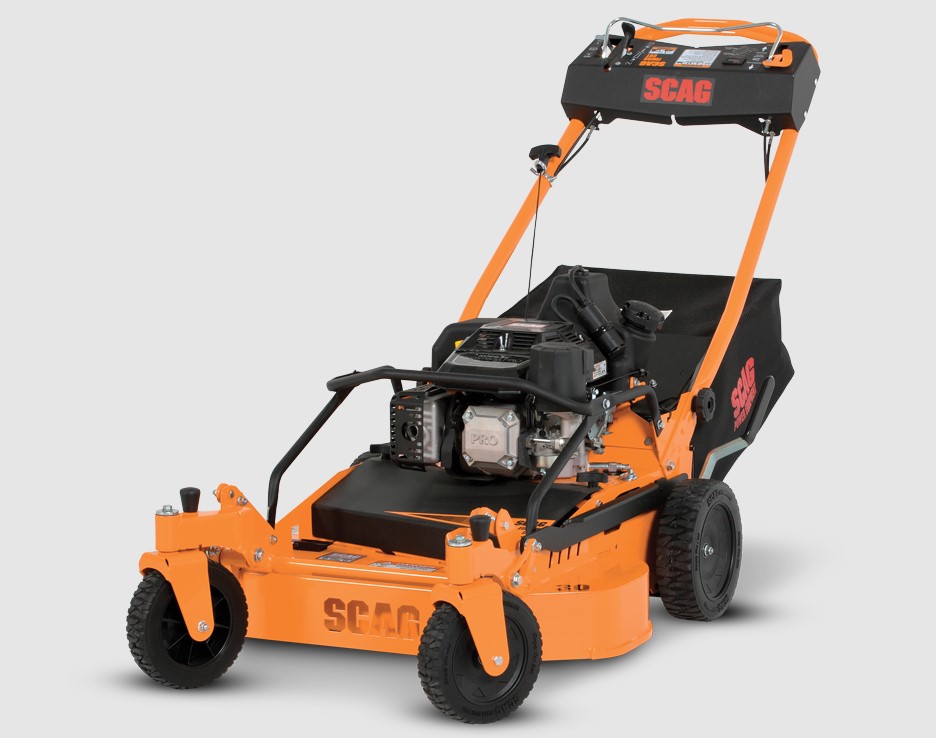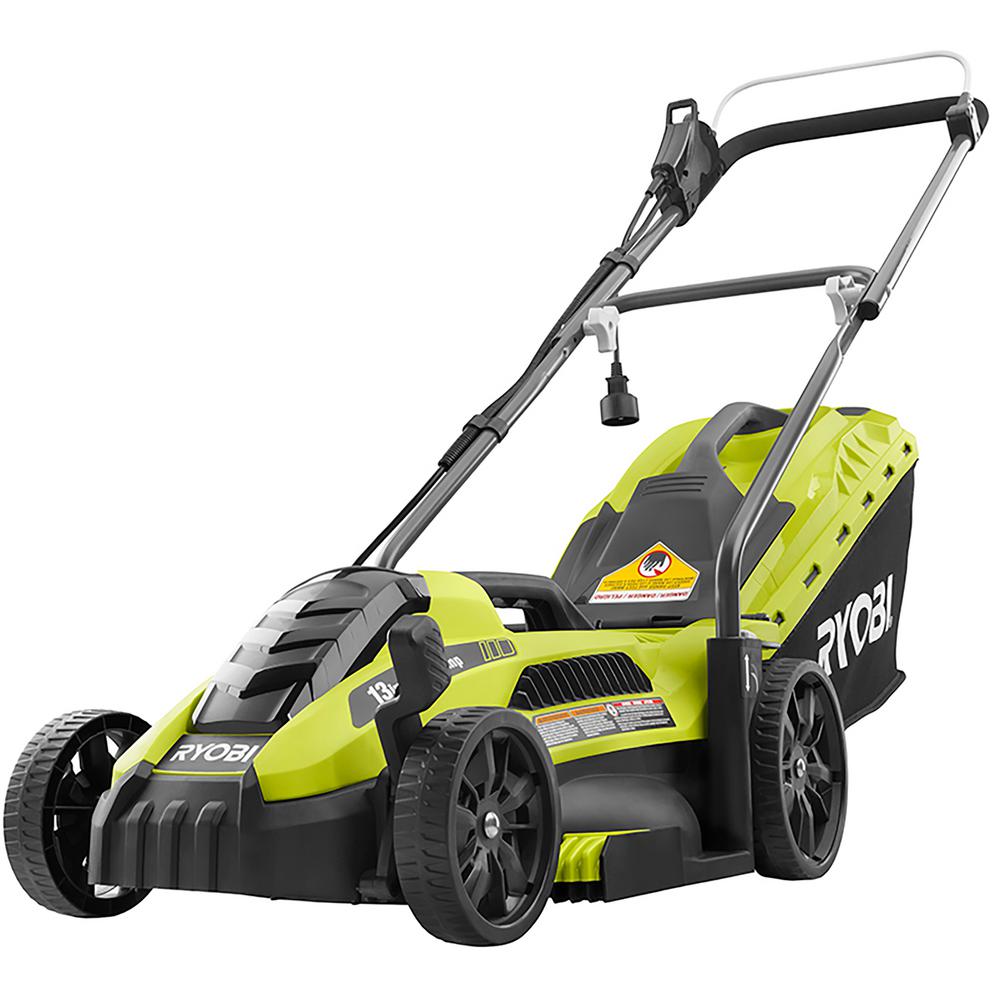A push lawn mower is a hand-powered lawn mower that uses a rotating blade to cut grass. Push lawn mowers are typically used for small to medium-sized lawns, and they are a more affordable option than riding lawn mowers. Push lawn mowers are also more environmentally friendly than riding lawn mowers, as they do not produce emissions.
The first push lawn mower was invented in 1830 by Edwin Budding, an English engineer. Budding’s mower was a large, heavy machine that was difficult to use. However, it was the forerunner of the modern push lawn mower. Today, push lawn mowers are available in a variety of sizes and styles, and they are an essential tool for any homeowner.
Push lawn mowers offer a number of advantages over riding lawn mowers. First, push lawn mowers are more affordable than riding lawn mowers. Second, push lawn mowers are more environmentally friendly than riding lawn mowers. Third, push lawn mowers are easier to maneuver than riding lawn mowers, making them ideal for small to medium-sized lawns. Finally, push lawn mowers require less maintenance than riding lawn mowers.
Best Push Lawn Mower
Selecting the ideal push lawn mower necessitates an exploration of its fundamental characteristics. To aid in this decision-making process, we delve into four crucial aspects:
- Cutting Width: Narrower decks are more maneuverable in tight spaces, while wider decks cover more ground, increasing efficiency.
- Blade Type: Mulching blades finely chop grass clippings for natural fertilization, while standard blades discharge clippings for disposal.
- Height Adjustment: Variable height settings accommodate different grass types and desired cutting lengths.
- Construction: Durable materials withstand rigorous use, while lightweight designs enhance maneuverability.
Understanding these aspects empowers you to choose a push lawn mower that aligns with your specific needs. Consider the size of your lawn, grass type, and desired cut quality. By carefully evaluating these factors, you can make an informed decision that ensures your lawn looks its best.
Cutting Width
Understanding cutting width is crucial when selecting a push lawn mower, as it directly impacts maneuverability and efficiency. Narrower cutting decks, typically ranging from 14 to 18 inches, excel in tight spaces and intricate landscapes. They can easily navigate around obstacles such as trees, shrubs, and flower beds, making them ideal for smaller lawns or areas with complex layouts.
- Maneuverability: Narrower decks provide greater maneuverability, allowing for precise cutting around obstacles and in tight corners. This is particularly advantageous in areas with dense plantings or irregular shapes.
- Efficiency: Wider cutting decks, typically ranging from 20 to 22 inches, offer increased efficiency by covering more ground with each pass. This is ideal for larger, open lawns where covering ground quickly is a priority.
Ultimately, the choice between a narrower or wider cutting deck depends on the specific needs of the user and the characteristics of the lawn. By considering the size, shape, and complexity of the lawn, users can make an informed decision to optimize their mowing experience.
Blade Type
The type of blade used in a push lawn mower has a significant impact on the overall performance and effectiveness of the mower. There are two main types of blades: mulching blades and standard blades.
-
Mulching Blades:
Mulching blades are designed to finely chop grass clippings into tiny pieces, which are then distributed back onto the lawn as a natural fertilizer. This process, known as mulching, has several benefits. First, it eliminates the need to dispose of grass clippings, saving time and effort. Second, mulching returns nutrients to the soil, promoting healthy grass growth. Third, mulching helps to retain moisture in the soil, reducing the need for watering.
-
Standard Blades:
Standard blades, on the other hand, are designed to discharge grass clippings to the side or rear of the mower. This is the more traditional method of mowing, and it is still preferred by some users who want to remove grass clippings from their lawn. However, standard blades do not offer the same benefits as mulching blades in terms of fertilization and soil health.
The choice between mulching blades and standard blades depends on the user’s individual needs and preferences. If you want to fertilize your lawn naturally and reduce your environmental impact, then mulching blades are a good option. If you prefer to remove grass clippings from your lawn, then standard blades are a better choice.
Height Adjustment
Variable height settings are a crucial feature of the best push lawn mowers, enabling users to adjust the cutting height according to the type of grass and the desired cut length. This is important because different grass types have different optimal cutting heights, and the desired cut length can vary depending on personal preference or the season.
For example, cool-season grasses, such as Kentucky bluegrass and perennial ryegrass, should be cut at a height of 2.5 to 3.5 inches. This allows the grass to develop a strong root system and helps to prevent disease. Warm-season grasses, such as Bermuda grass and zoysia grass, should be cut at a height of 1 to 2 inches. This helps to promote a dense, lush lawn.
In addition to the type of grass, the desired cut length can also affect the height adjustment setting. For a formal lawn, a shorter cut length may be preferred, while a longer cut length may be more suitable for a natural or informal lawn. Ultimately, the best cut length is a matter of personal preference, and the variable height settings on the best push lawn mowers allow users to customize the cut to their liking.
Variable height settings are also important for scalping prevention. Scalping occurs when the lawn mower blade is set too low and removes too much of the grass blade. This can damage the grass and make it more susceptible to disease and drought. By using the correct height adjustment setting, users can avoid scalping and maintain a healthy, beautiful lawn.
Construction
The construction of a push lawn mower plays a critical role in its overall performance and longevity. Durable materials ensure that the mower can withstand the rigors of regular use, while lightweight designs enhance maneuverability, making it easier to operate and control.
-
Durable Materials:
Durable materials, such as steel and aluminum, are used in the construction of high-quality push lawn mowers. These materials are resistant to wear and tear, ensuring that the mower will last for many years. Durable materials also help to protect the mower from damage caused by impacts or collisions.
-
Lightweight Designs:
Lightweight designs are another important consideration for push lawn mowers. Lightweight mowers are easier to maneuver, making them ideal for use on smaller lawns or in areas with tight spaces. Lightweight designs also reduce fatigue, making it easier to mow for longer periods of time.
The best push lawn mowers combine durable materials with lightweight designs to create a mower that is both durable and easy to use. By considering these factors, users can choose a push lawn mower that will meet their needs and provide years of reliable service.
Tips for Using a Push Lawn Mower
Using a push lawn mower effectively requires attention to proper techniques and regular maintenance. To achieve the best results and maintain your mower in optimal condition, consider the following tips:
Sharpen the blade: A sharp blade cuts grass cleanly, reducing tearing and promoting healthy growth. Regularly sharpen the blade to maintain its sharpness and prevent ragged cuts.
Adjust the cutting height: Set the cutting height according to the grass type and desired length. Taller grass requires a higher cutting height to prevent scalping, while shorter grass can be cut at a lower height for a more formal appearance.
Mow regularly: Consistent mowing encourages healthy growth and prevents grass from becoming too long and difficult to cut. Mow frequently during the growing season, adjusting the frequency based on the grass type and growth rate.
Overlap passes: Avoid scalping by overlapping your passes slightly. This ensures even cutting and prevents missed patches.
Clean the mower: After each use, clean the mower to remove grass clippings and debris. This prevents buildup that can hinder performance and cause rust.
Store properly: Store the mower in a dry place when not in use. Cover it to protect it from the elements and extend its lifespan.
Service regularly: Regular maintenance is crucial for optimal performance. Check the oil level, replace the spark plug, and clean or replace the air filter as recommended in the manufacturer’s instructions.
By following these tips, you can effectively use your push lawn mower to maintain a healthy, beautiful lawn while extending the life of your equipment.
Conclusion
The exploration of push lawn mowers in this article has highlighted the importance of considering cutting width, blade type, height adjustment, and construction when making a decision. By carefully evaluating these factors, homeowners can choose the best push lawn mower for their specific needs, ensuring a well-maintained and beautiful lawn.
Regular maintenance and proper mowing techniques are essential for maximizing the performance and longevity of any push lawn mower. Adhering to the tips outlined in this article will not only enhance the mowing experience but also contribute to a healthier, more aesthetically pleasing lawn.




